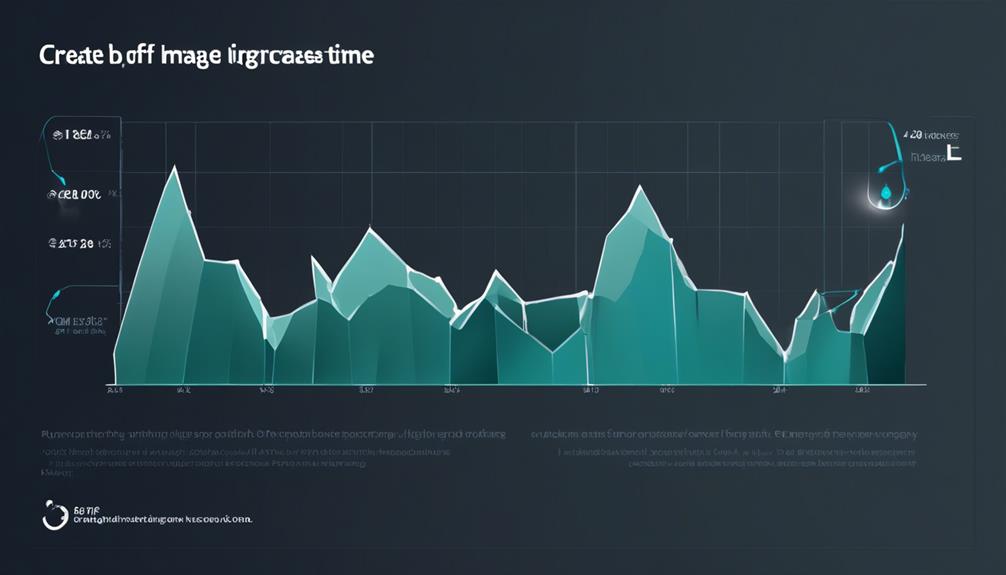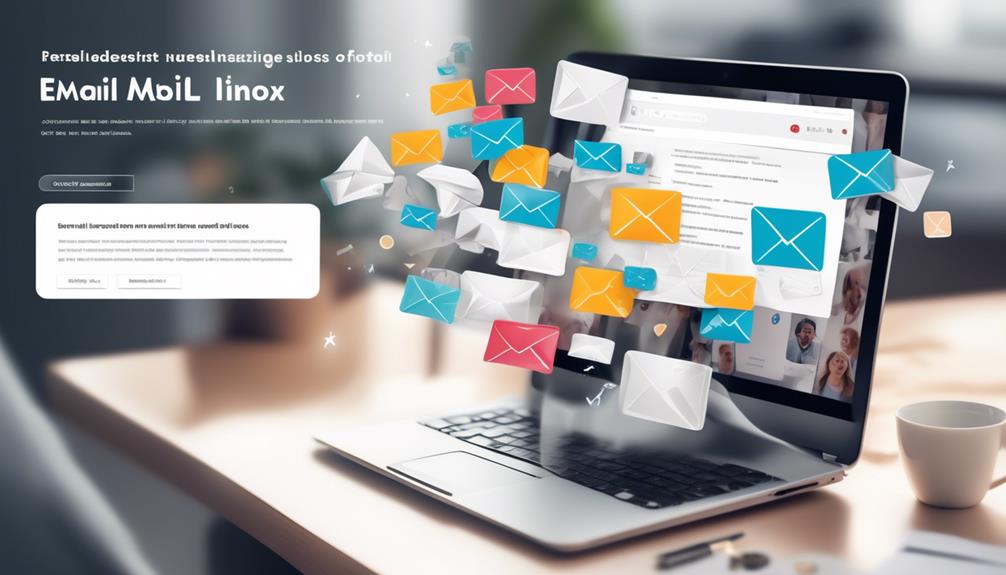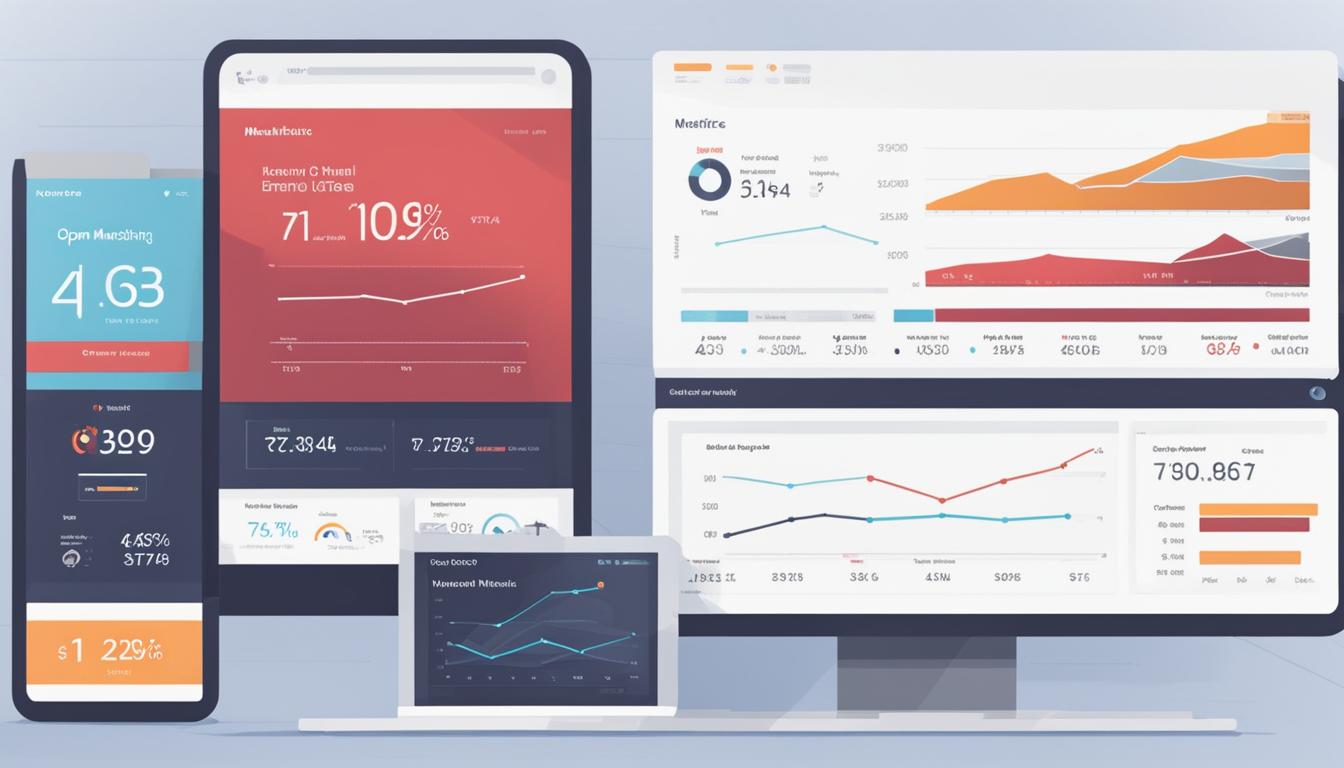So, what really leads to an increase in open rates for email marketing campaigns? We’ve encountered numerous tactics and hypotheses, but are they actually effective? This is a question that numerous marketers and companies are perpetually seeking to address.
There's a multitude of factors at play when it comes to getting recipients to engage with your emails. From the content and timing to the subject line and list quality, the elements that drive higher open rates are diverse and intricate.
But what are the real secrets behind achieving this? Let's explore the key components that contribute to boosting open rates and ultimately enhancing the effectiveness of email campaigns.
Key Takeaways
- Email segmentation is crucial for generating higher open rates, click-through rates, and engagement.
- Crafting effective subject lines by using specific personal names and keeping them between 6 to 10 words can significantly increase open rates.
- Timing and frequency considerations, such as sending emails on Tuesdays and at 10am or 1pm, can maximize open rates.
- Leveraging automation and adopting a conversational tone in emails can improve open rates by delivering personalized and valuable content.
Understanding Email Open Rates
Understanding email open rates is crucial for assessing the effectiveness of email campaigns and optimizing future strategies. Email open rate, a key metric in email marketing, is calculated by dividing the number of opened emails by the number of delivered emails. This metric provides valuable insights into the engagement levels of the target audience. Factors such as timing, subject lines, and relevance to the target audience play a significant role in influencing email open rates.
Segmenting email lists based on demographics, behavior, or preferences can lead to higher open rates as it allows for more targeted and personalized content delivery. Additionally, personalizing subject lines and sender names can also have a substantial impact on email open rates.
Factors Influencing Open Rates

Moving from the understanding of email open rates, we can now explore the pivotal factors that influence these rates and ultimately impact the success of email campaigns.
One crucial factor is the email subject line. Clever, brief, and curiosity-stimulating subject lines have been shown to significantly improve open rates.
Additionally, the value provided in the email content and the call to action it includes play a vital role in engaging the recipient and driving open rates.
Email segmentation is another influential factor. Sending personalized content to specific segments of the email list increases engagement and can lead to higher open rates.
Furthermore, finding the right balance in email frequency is important. Sending too many emails can lead to fatigue and decreased open rates, while sending too few can result in lowered engagement.
Timing the delivery of emails is also a significant factor. Researching the best times to send emails based on industry and audience preferences can greatly impact open rates.
Importance of Email Segmentation
Segmenting your email list can significantly boost open rates and improve the overall effectiveness of your email campaigns.
Here's why email segmentation is crucial:
- Higher Open Rates: A segmented list can generate a 94% open rate compared to a 40% open rate for a main blog subscriber list, indicating the substantial impact of segmentation on open rates.
- Improved Click-Through Rates: Not only does segmentation lead to higher open rates, but it also improves click-through rates, driving more meaningful engagement with your email content.
- Underutilized Strategy: Surprisingly, 89% of marketers don't segment their email lists, missing out on the potential for significantly higher open rates and improved campaign performance.
- Actionable Step for Improvement: Start segmenting your email lists to improve open rates and overall engagement, as it's a proven strategy to enhance the effectiveness of your email marketing efforts.
Crafting Effective Subject Lines
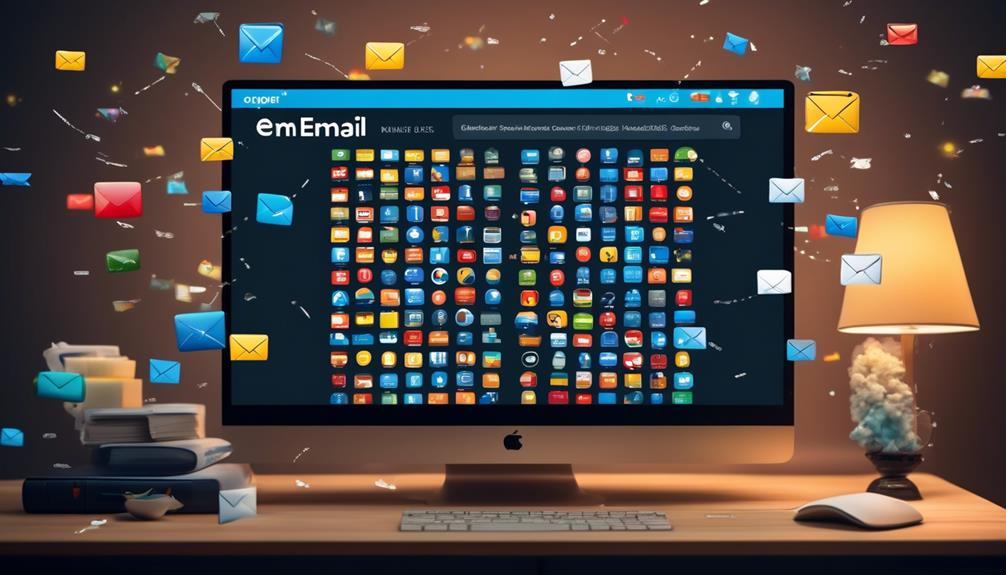
Crafting effective subject lines is crucial for increasing open rates in email campaigns.
Using specific personal names and keeping subject lines between 6 to 10 words can significantly boost open rates.
Additionally, choosing the right words and avoiding question marks and emojis are essential factors to consider when crafting engaging subject content.
Concise Subject Lines
Using specific personal names in subject lines has been shown to increase open rates by 35%.
Crafting concise subject lines is crucial for optimizing email open rates in marketing campaigns.
Here are some tips for creating effective subject lines:
- Keep it short: Subject lines with 6 to 10 words deliver the highest open rate.
- Personalize it: Using a specific personal name instead of a general email address or company name can increase open rates by 35%.
- Choose words wisely: Incorporate words like 'secrets', 'e-sales', and 'awesome' to increase the likelihood of clicks.
- Avoid symbols: Subject lines with a question mark or hashtag are less likely to be opened.
Engaging Subject Content
When aiming to craft engaging subject lines for email marketing campaigns, personalization with the recipient's name has been demonstrated to enhance open rates by 35%. Crafting subject lines with 6 to 10 words can also deliver the highest open rates. Additionally, using certain words such as 'secrets' and 'awesome' can impact open rates positively. However, subject lines with a question mark or hashtag are less likely to be opened. It's important to note that emojis in subject lines do not increase open rates and may even generate negative sentiment. Below is a table summarizing the key factors for crafting effective subject lines:
| Subject Line Factor | Impact on Open Rate |
|---|---|
| Personalization | +35% |
| Length (6-10 words) | High |
| Word Choice | Positive Impact |
Crafting engaging subject content is essential for driving higher open rates in email campaigns.
Timing and Frequency Considerations

Considering our subscribers' habits and schedules, the timing and frequency of email sends play a crucial role in achieving higher open rates. To optimize open rates, it's important to consider the following timing and frequency considerations:
- Day of the week: Research suggests that Tuesday is the best day to send emails for the highest open rate. Consider experimenting with different days to find what works best for your audience.
- Optimal times: Subscribers are most likely to read emails at 10am or 1pm. These peak times should be considered when scheduling email sends to maximize open rates.
- Finding the right balance: It's essential to find the ideal frequency for sending emails. Sending too many may lead to subscriber fatigue, while sending too few might result in decreased engagement.
- Impact of mobile devices: Given that a significant portion of emails are now opened on mobile devices, it's crucial to consider how timing and frequency may impact open rates on these platforms.
Leveraging Automation for Open Rates
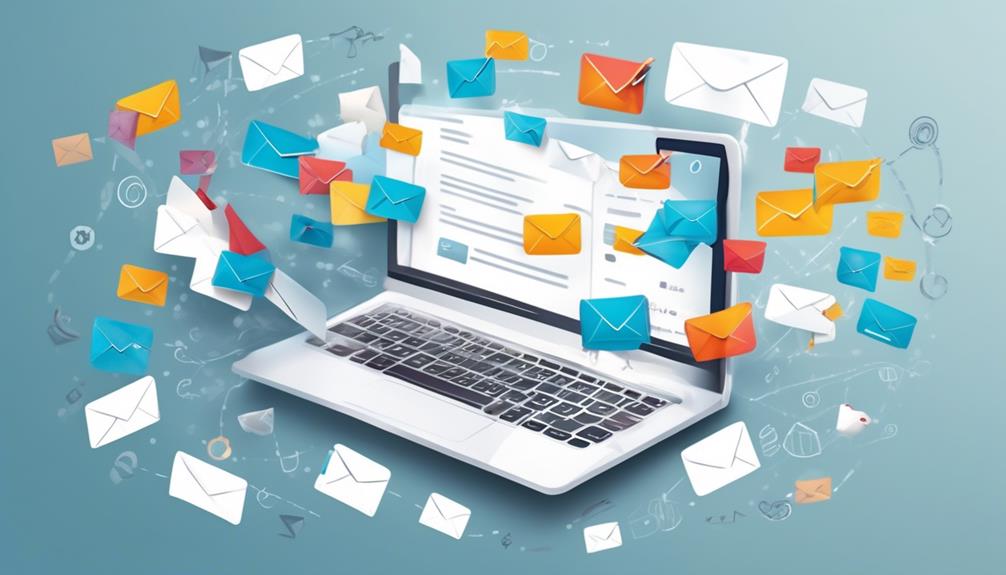
Leveraging automation can significantly enhance open rates in email campaigns by delivering personalized and timely content based on user behavior. Automated emails that offer valuable content and solutions can improve open rates by engaging recipients at the right time.
By utilizing automation, it becomes possible to segment the audience and tailor emails, resulting in increased open rates for specific target groups. Additionally, automation allows for testing different send times and subject lines to identify the most effective strategies for higher open rates. This approach not only boosts open rates but also enhances overall email campaign performance.
Furthermore, leveraging automation for open rates involves monitoring and adjusting automated processes based on performance to continually improve email engagement. Personalized subject lines and timely content delivered through automation can further contribute to higher open rates, highlighting the importance of leveraging automation in email campaigns.
Impact of Tone in Emails
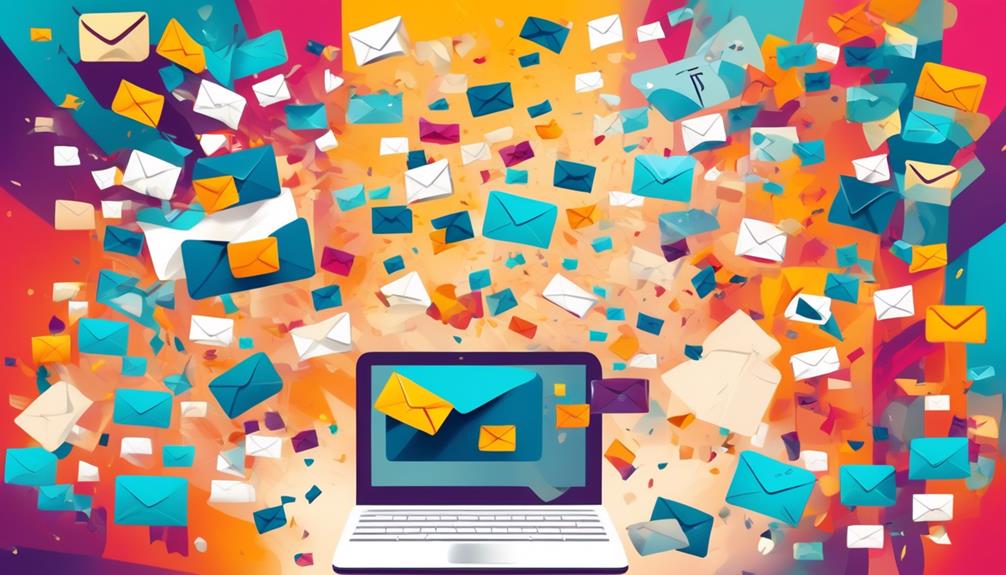
Utilizing a conversational and personable tone in emails can humanize the brand and create a more inviting communication style, ultimately impacting open rates. When considering the impact of tone in emails, it's essential to understand how it influences the recipient's decision to open an email.
Here's how the tone of an email can impact open rates:
- Humanizing the Brand: A conversational tone can make the brand feel more approachable and relatable, which can encourage recipients to open the email to engage with the content.
- Personalization: Personalizing emails with the recipient's first name or tailored content can create a more personalized and engaging experience, increasing the likelihood of the email being opened.
- Relatability and Engagement: Content with a conversational tone is more relatable and engaging, leading to higher click rates and ultimately impacting email open rates.
- Encouraging Interaction: Incorporating personalization in subject lines and body copy can encourage recipients to open and read more, driving higher email open rates.
Optimizing for Mobile Devices
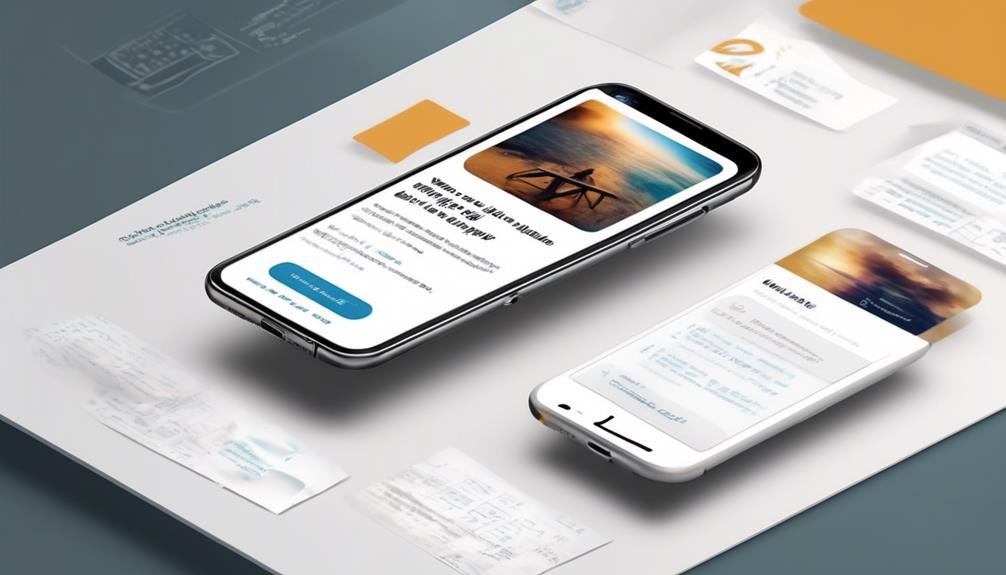
With the increasing dominance of mobile and tablet devices for email engagement, optimizing emails for these platforms is now crucial for maintaining high open rates. Email open rates from mobile devices have grown by over 100% since 2011, and currently, 81% of all emails are opened and read on mobile devices. This shift in consumer behavior highlights the necessity for email marketing efforts to prioritize mobile compatibility.
Failing to ensure emails are compatible with mobile devices can significantly hinder open rates and overall campaign effectiveness. With such a large portion of email engagement occurring on mobile devices, it's imperative to design emails that are responsive and visually appealing on smaller screens.
Additionally, optimizing email content for quick consumption on mobile devices can further drive engagement. By considering the mobile user experience in email design and content, businesses can effectively enhance their open rates and overall success of their email marketing efforts.
Analyzing Click-Through Rates
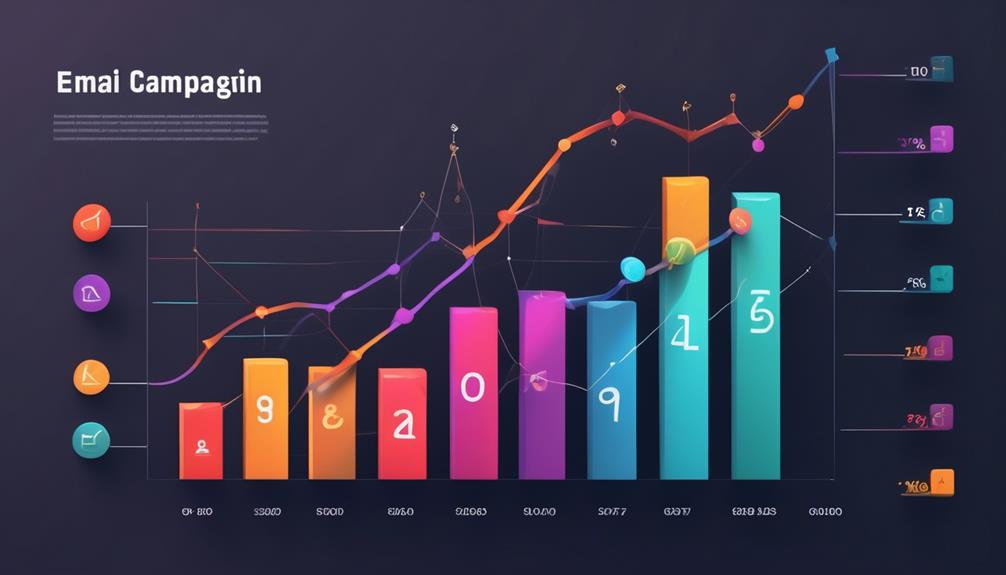
When it comes to email campaigns, analyzing click-through rates is essential for understanding how recipients engage with our content.
By reviewing engagement metrics, we can gain valuable insights into the effectiveness of our email content and the level of brand interest it generates.
Click behavior analysis allows us to assess the placement and appeal of our links, helping us optimize future campaigns for better results.
Click Behavior Analysis
Analyzing click-through rates provides valuable insight into the engagement levels of email recipients and allows for the evaluation of the effectiveness of call-to-action elements within the email. Understanding click behavior is crucial for optimizing email campaigns.
Here's a breakdown of click behavior analysis in email campaigns:
- Percentage Measurement: It involves measuring the percentage of email recipients who clicked on a link within the email.
- Evaluating Call-to-Action: Click behavior analysis allows for evaluating the effectiveness of call-to-action elements within the email.
- Content Resonance: Marketers can identify content that resonates with their audience and drives further action through click behavior analysis.
- Future Optimization: Understanding click behavior patterns guides in optimizing future email campaigns for improved engagement.
Engagement Metrics Review
As marketers, we continually seek to understand and improve user engagement with email content. A crucial aspect of this is analyzing click-through rates to gauge the effectiveness of our campaigns.
Click-through rates measure the percentage of recipients who clicked on links or CTAs within an email, providing valuable insights into user engagement. By analyzing click-through rates, we can assess the quality and relevance of our email content, as well as the placement of links or CTAs.
Fluctuations in click-through rates can indicate shifts in user engagement and the impact of our email campaigns. Understanding and optimizing click-through rates is instrumental in improving user engagement and ultimately achieving success in our email campaigns.
Therefore, regularly reviewing engagement metrics such as click-through rates is essential for enhancing the effectiveness of our email campaigns.
Enhancing Email Content Quality
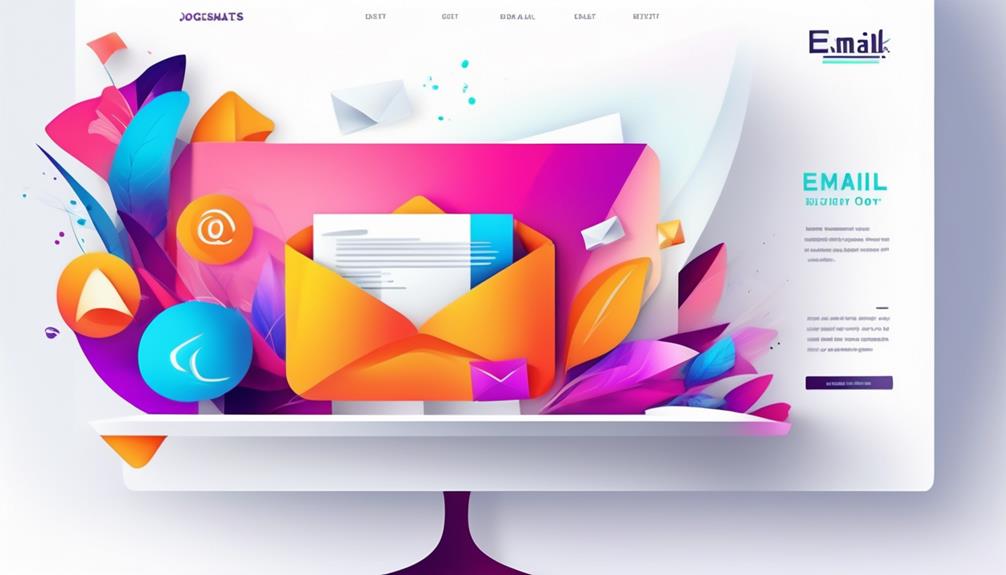
To enhance email content quality, incorporating personalized and engaging subject lines can significantly improve open rates and reader engagement. According to industry data, subject lines with 6 to 10 words tend to have the best open rates.
Additionally, personalizing subject lines with the reader's name can help increase email open rates. It's also crucial to use a recognizable sender name, as this can establish trust and credibility with the recipient, further enhancing email content quality.
Moreover, optimizing email campaigns for mobile is essential, as a large portion of email content is consumed on mobile devices. By ensuring that emails are visually appealing and easy to navigate on mobile, engagement metrics can be positively impacted, leading to higher open rates.
Frequently Asked Questions
What Drives Email Open Rates?
Email open rates are driven by various factors, including sender name, subject line, and mobile optimization.
Segmenting email lists can also lead to higher open rates.
Understanding how people read emails is crucial for optimizing email marketing campaigns.
What Factors Can Impact the Open Rate of Your Email Campaigns?
We've found that various factors can significantly impact email open rates.
The sender's name and subject line play a crucial role, along with personalization and mobile optimization.
Additionally, segmenting email lists has proven to be an effective strategy.
These factors collectively contribute to higher open rates in email campaigns, making them an essential focus for successful email marketing.
What Element Increases an Email Open Rate?
Using a specific personal name instead of a general email address or company name can increase open rates by 35%.
Subject lines with 6 to 10 words deliver the highest open rate.
Most clicked-on emails include words like 'secrets,' 'e-sales,' and 'awesome'.
These elements are key in driving higher open rates in email campaigns.
How Can I Increase My Email Open Rate?
We increase our email open rate with compelling subject lines, personalized content, and targeted segmentation.
Timing is crucial, with Tuesday being the optimal day for sending emails.
Mobile optimization is non-negotiable—81% of emails are opened on mobile.
Our strategies drive results: 94% open rate with segmented lists versus 40% for non-segmented.
It's about knowing our audience and delivering what they want.
As the saying goes, 'Right message, right time.'
What Strategies Can Improve Email Open Rates in Campaigns?
Improving email campaign open rates requires compelling subject lines and personalized content. Segmenting the audience and testing different send times can also make a significant impact. Additionally, ensuring mobile optimization and consistent branding can engage recipients and boost email campaign open rates.
Conclusion
In conclusion, driving higher open rates in email campaigns requires a strategic approach. By focusing on relevance, engaging content, quality email lists, timing, and effective subject lines, we can see significant improvements in open rates.
For example, a clothing retailer saw a 20% increase in open rates by segmenting their email list based on customer preferences and sending personalized recommendations.
With the right tactics and attention to detail, we can maximize the impact of our email campaigns and drive better results.
